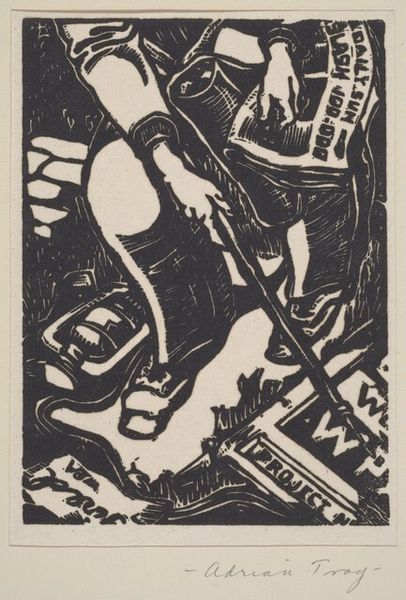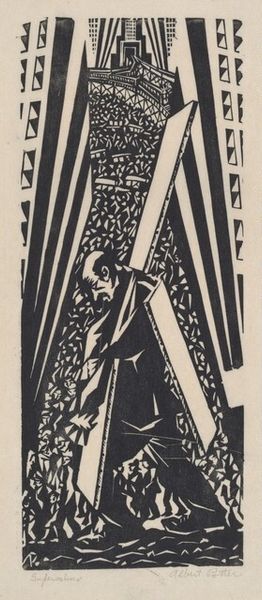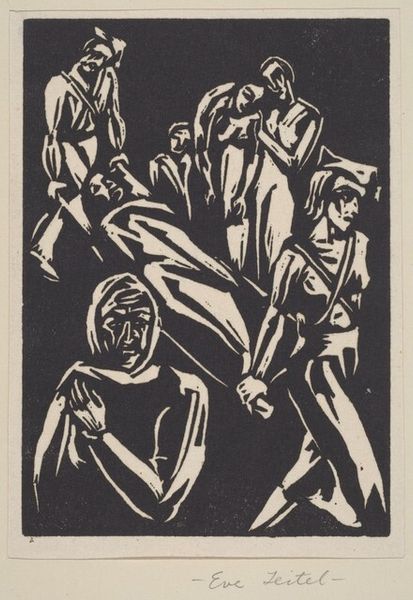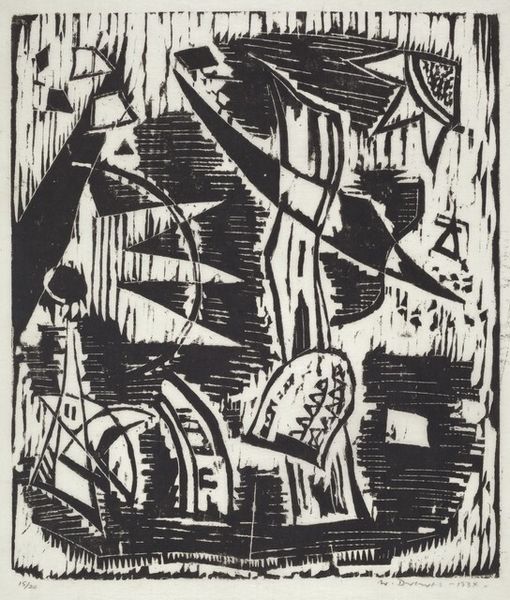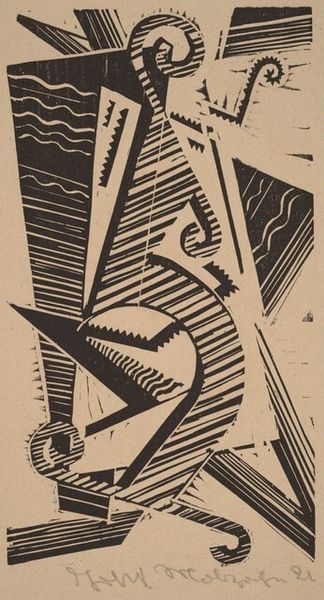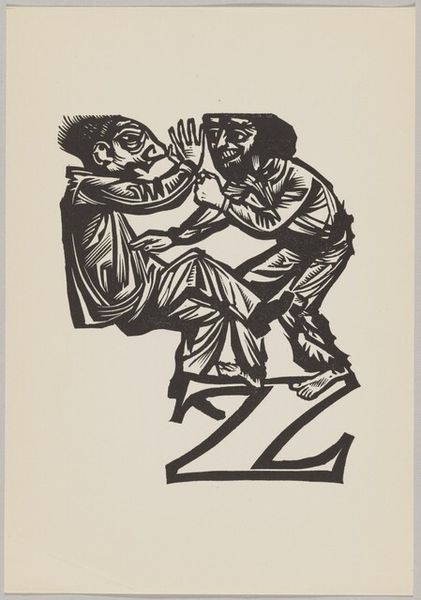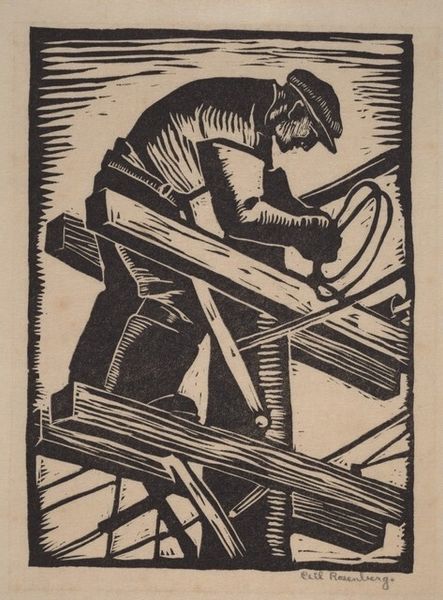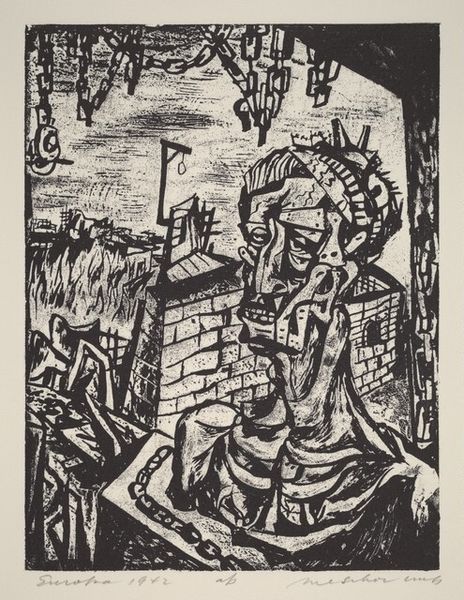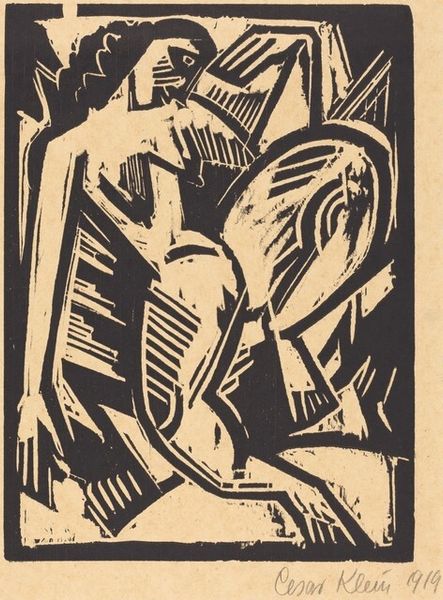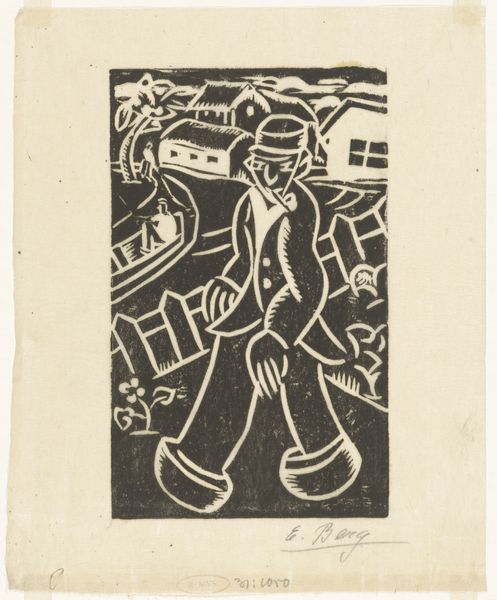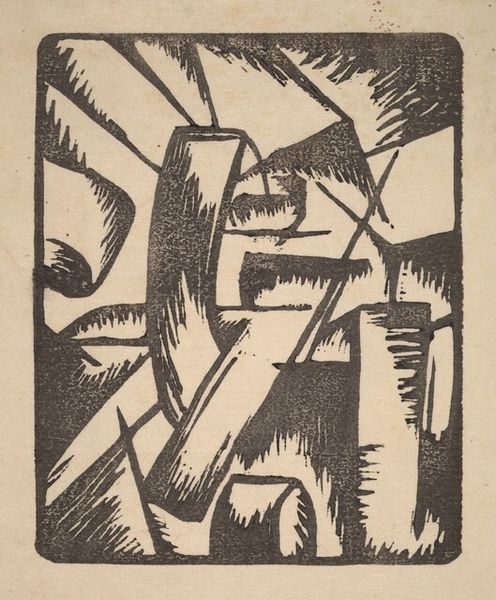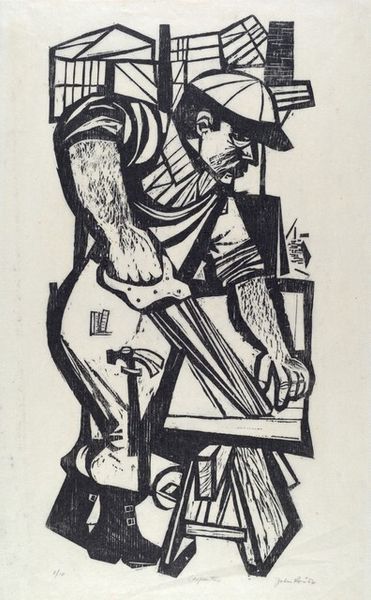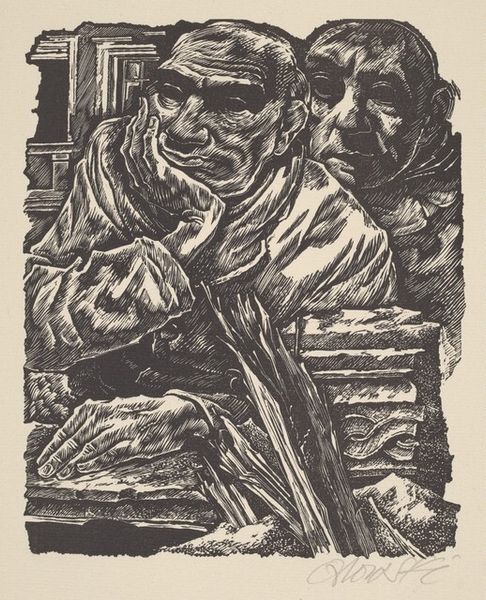
graphic-art, print, woodcut
#
graphic-art
#
narrative-art
# print
#
figuration
#
social-realism
#
woodcut
#
realism
Dimensions: block: 322 x 235 mm sheet: 405 x 304 mm
Copyright: National Gallery of Art: CC0 1.0
Curator: Welcome. We’re looking at "Moving Man," a woodcut print by Julius Weiss, likely created between 1935 and 1943. The stark black and white is incredibly striking, isn't it? Editor: It is! It immediately brings to mind the kind of grim determination you see etched on faces in old photographs of the Depression era. He looks stooped, exhausted. Curator: Absolutely. Woodcut as a medium lends itself to this kind of graphic simplicity, and social realism often uses it to depict the working class. Weiss's choice to focus on the burden speaks volumes. The shadow emphasizes a sort of psychological weight. Editor: You know, the angularity almost abstracts the figure. It’s like we are seeing not just one man but the weight of a generation on his shoulders, you could say. But I feel sadness and… I guess also admiration. The blocky, simplified forms become powerful in their very limitations. Curator: Indeed. The image uses negative space brilliantly, pushing the viewer to imagine the unseen, the immense object he carries, perhaps building materials? There’s almost a heroic quality even in his defeat. The white spaces become almost architectural. Editor: I'm caught by the way the shadows play across his face – he's obscured, anonymous, which amplifies that universal experience of labor, of toiling in relative anonymity. It's as if he's walking out of the depths of some cavernous place... very evocative. Curator: Weiss created this work during a time when many artists turned their attention to social issues, using art as a means of commentary and even activism. There’s that call back to tradition, religious icon painting for instance, where certain attributes signaled sacrifice. Editor: He is a kind of secular Saint! Maybe Saint of Unloading Trucks and Moving Boxes. Jokes aside, it's compelling how a few stark cuts can convey such weariness. But ultimately, for me, it resonates, doesn't depress. The figure marches onward; that's its strength. Curator: Yes, exactly, the endurance, the unrelenting will to keep moving despite the crushing weight of circumstances. Weiss's “Moving Man” reminds us to appreciate and recognize that inherent tenacity within us all. Editor: Beautifully said!
Comments
No comments
Be the first to comment and join the conversation on the ultimate creative platform.
